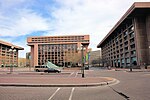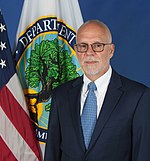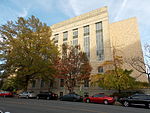International Spy Museum
2002 establishments in Washington, D.C.Espionage museumsHistory museums in Washington, D.C.Industry museums in Washington, D.C.Law enforcement museums in the United States ... and 5 more
Military and war museums in Washington, D.C.Museums established in 2002Pages with non-numeric formatnum argumentsPenn QuarterSouthwest Federal Center

The International Spy Museum is an independent non-profit museum which documents the tradecraft, history, and contemporary role of espionage. It holds the largest collection of international espionage artifacts on public display. The museum opened in 2002 in the Penn Quarter neighborhood of Washington, D.C., and relocated to L'Enfant Plaza in 2019.
Excerpt from the Wikipedia article International Spy Museum (License: CC BY-SA 3.0, Authors, Images).International Spy Museum
L'Enfant Plaza Southwest, Washington
Geographical coordinates (GPS) Address Phone number Website External links Nearby Places Show on map
Geographical coordinates (GPS)
| Latitude | Longitude |
|---|---|
| N 38.884 ° | E -77.02551 ° |
Address
International Spy Museum
L'Enfant Plaza Southwest 700
20024 Washington
District of Columbia, United States
Open on Google Maps








